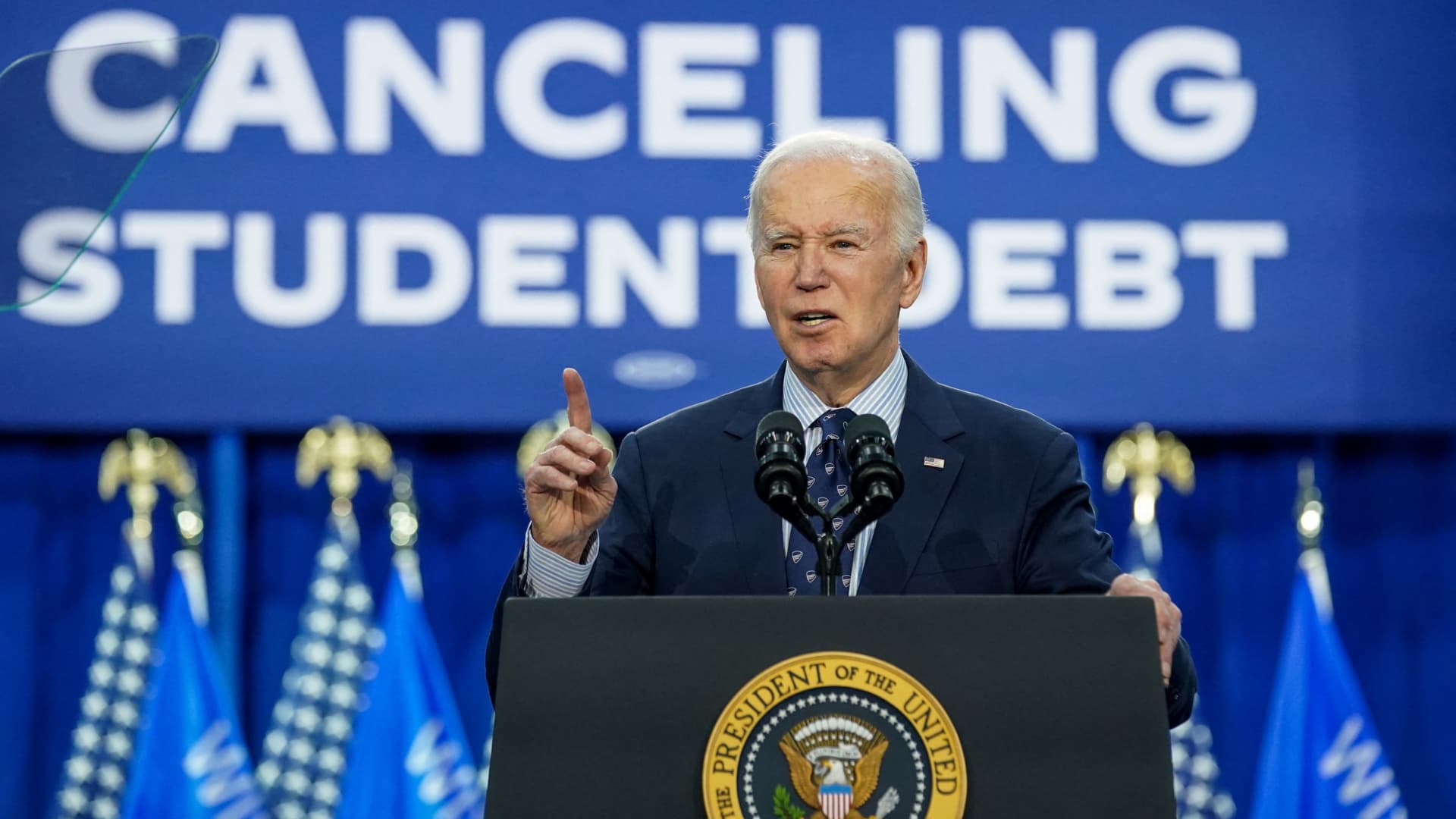U.S. President Joe Biden speaks as he announces a new plan for federal student loan relief during a visit to Madison Area Technical College Truax Campus, in Madison, Wisconsin, U.S, April 8, 2024.
Kevin Lamarque | Reuters
The Biden administration is sending emails to tens of millions of borrowers this week about its new plans to cancel student debt.
“We want to make you aware of this potential relief,” the U.S. Department of Education writes in the email, which CNBC reviewed.
The Department of Education estimates that at least 25 million borrowers could qualify.
Who will be eligible?
With the hope that this aid package survives the inevitable next round of legal challenges, the Education Department revised its forgiveness plan to be more targeted.
More from Personal Finance:
How to find out how big your Social Security benefits may be
IRS issues final rules for inherited IRAs
How kids from rich families learn about money
In its email to borrowers, the department lists four categories of eligibility.
Those are:
- Borrowers who owe more than they did at the start of repayment.
- Those who entered repayment on their undergraduate loans on or before July 1, 2005, or, if they have graduate loans, on or before July 1, 2000.
- People who are already eligible for student loan forgiveness under one of the government’s existing programs but just haven’t yet applied.
- Students from “low-financial value” programs.
Is there anything I need to do?
Those who want to be included in the relief do not need to do anything, the Education Department said. No application will be needed.
However, if, for some reason, a borrower wants to opt out of the debt forgiveness, they must do so by Aug. 30 with their loan servicer.
When could I see the relief?
The Education Department is expected to publish its final rule on the debt relief sometime in October. Once that happens, it will likely move to cancel people’s loans quickly to get ahead of lawsuits, said Luke Herrine, an assistant professor of law at the University of Alabama.
“It is often harder to undo something rather than prevent its being done, both administratively and legally,” Herrine said.
“And if the administration doesn’t wait, it forces opponents to put together a lawsuit quickly and without full information,” Herrine said.

Yet opponents of the relief may already be prepared to fight it, said higher education expert Mark Kantrowitz.
“Most likely a lawsuit will be filed the day the rule is final, seeking a temporary injunction to prevent the Biden administration from forgiving loans” while the legal battle plays out, Kantrowitz said.
In that case, borrowers may be stuck waiting for news on the relief for months or longer. The case may even go to the Supreme Court again, where it is uncertain if it would survive.







